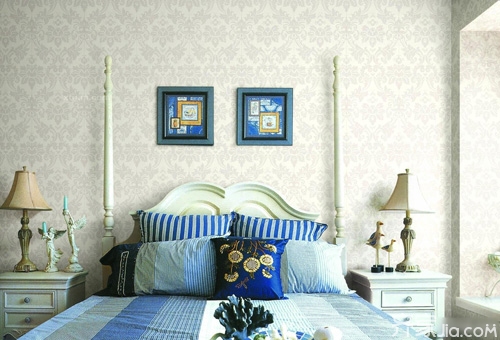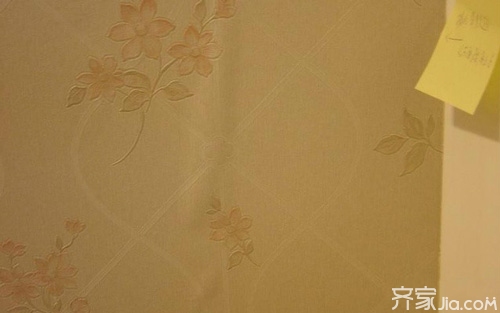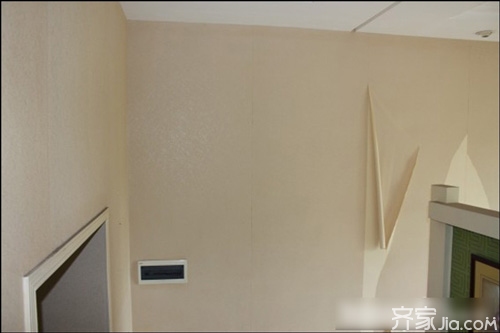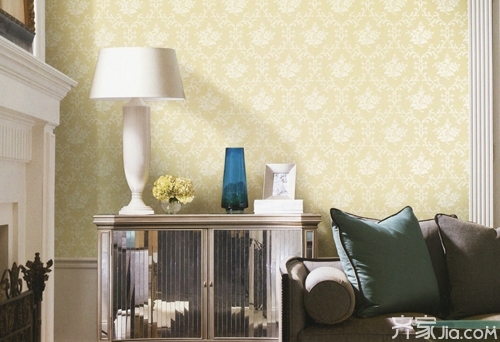People depend on clothes and Buddhas rely on gold. So what is the home decoration? Some people will choose to paint on the wall, some people will choose to tile, and others will choose to paste wallpaper. Well, these are the common methods of wall decoration in decoration. Their problems are unfortunate and common. In terms of wallpaper, color difference, curling, and blistering are all "constants" in construction. Let's take a look at the "uninvited guests" we encountered in wallpapering today. "Intruder" 1, a good one fell off After the wallpaper is peeled off, it is necessary to check whether the wall is well treated or whether the glue meets the requirements. As long as the joints of the joints are properly treated, no peeling will occur, and the time can be guaranteed for 5-10 years. However, the material requires high quality for the wall base, and some walls are not approved, and they will be deashed in a wet environment. This is also our common skinning phenomenon. "Uninvited guest" 2, close to the pimple will bubble Check the amount of glue applied or the wall surface has been glued, you can water the bubble, the wallpaper tight. Use a needle on the surface of the wallpaper to get rid of the air bubbles and release the gas. Use a needle to extract the appropriate amount of adhesive and inject the needle into the eye. Then use a scraper to squeegee. "Uninvited guest" 3, wallpaper sticky shrink joints appear Cracks appear after shrinkage of the wallpaper. Check whether the construction method is incorrect or the adhesive strength is poor. Construction contraction occurs when the sealant applied to the bottom of the wall is not dried. In fact, this problem can also be solved. It is generally recommended to choose a good adhesion, fast-drying wallpaper glue can be solved. Adhesiveness is good for the wallpaper to stick firmly on the wall, the wallpaper can not shrink back. Of course, quick-drying is also a must. When the wallpaper has not significantly contracted, the glue begins to dry out and shows adhesiveness, which naturally solves the problem of wallpaper shrinkage. "Uninvited guest" 4, wallpaper wears "perspective equipment" Many wallpapers are made of non-woven fabrics, plain paper materials, and there is no PVC coating on them, so the entire sheet of paper is very thin. For example, we chose a white paper wallpaper. After a year or two, we found that white wallpaper was yellow, black, or something colorful. This is also caused by the glue or base film, and more on the glue. The normal glue should be transparent after drying, and many glues will dry out later or yellow or black, this phenomenon will occur. Of course, there is also a situation where the base film has a problem that the composition of the base film is too complicated to react with wall materials or with air components, and it is colorful after it is dried. "Uninvited guest" 5, do not want to be "bound" by the wall After the construction of the wallpaper, the edge is curled up. We should check whether the glue is even and the wall surface water absorption, and increase the adhesive strength of the glue. "Uninvited Guest" 6. You can't spend it. This is a common mistake made by novices. In this case, we should check whether the construction method is correct or whether the wallpaper is not used before construction, or whether the paper is stretched or misaligned. It is advisable to have the right brushing glue on the sample table. "Uninvited guest" 7, is red? Is it pink? The color does not seem right The color difference during wallpaper construction is a very bad situation. Before use, we should first check whether the wallpaper model number and batch number are the same; then we will observe whether the color of the wallpaper has a color difference (for flowers, the same direction), if there is a color difference. Construction should be stopped. If the color of the wallpaper is different after construction, it should be the contrast of light or moisture. "Uninvited guest" 8, wallpaper edge is not clean During the construction, the edge is subject to excessive pressure and friction. The friction on the wallpaper should be reduced, and check whether the glue on the edge of the wall is cleared. Check whether the wall surface and the construction table are dirty, remove the excess glue, spray the cleaner into the stain with a sprayer, and wipe the cloth with the rag, and the stain will gradually disappear. If the wallpaper can be used often, the correct paving is not enough, and the cleaning and maintenance after construction is also very important: 1. After just paving the wallpaper, the room should close doors and windows for 2-3 days and dry it. Because of the immediate ventilation of the room where the wallpaper has just been finished, it will cause the edges of the wallpaper to appear undulated. Do not turn on air conditioners or other air conditioning equipment to prevent the wallpaper from shrinking and causing cracks. 2, in the wet season, should be properly ventilated during the day to prevent moisture gas invasion. 3. After wallpapering for 3 days, use a damp towel to gently wipe away the wallpaper glue left on the seams of the wallpaper. 4, wallpaper more resistant to scrub, but does not resist the blunt bump, if you find a small surface of the damage, you can use similar color paint or the same color wallpaper repair. 5, for the wallpaper with embossed pattern, can be cleaned once every 2-3 months with a vacuum cleaner. Non-convex wallpapers can be cleaned on weekdays only with a chicken feather list. After watching these, when encountering these wallpapers, they encounter these "uninvited guests" and bravely drive them away to make the wallpaper a true "beauty man." Wallpaper Paving Flat Field Holographic Concave Grating
The Concave Grating has the advantage of being able to constitute a spectroscopic system without any assistance from concave mirrors or similar types of image-forming elements. For this reason,the Concave Grating is used in a wide range of applications, such as analytical instruments,optical communications,biotechnology,and medical instruments. Spectroscopes incorporating concave gratings are classified roughly into two groups: polychromators or monochromators.
Please contact us for Customing Sizes and types of gratings.
Holographic gratings: Flat Field Holographic Concave Grating,Flat Field Concave Grating,Spherical Holographic Grating,Aberration Corrected Holographic Grating China Star Optics Technology Co.,Ltd. , https://www.opticsrealpoo.com



China star optics can provide customers with a variety of replicated grating products such as diffraction gratings, reflective gratings,holographic gratings,concave gratings etc. to meet different needs. Maximum ruled area is up to 300x300mm2 for plane ruled diffraction gratings. For replicated diffraction and transmission gratings the ruling density can be from 20 grooves per millimeter to 2400 grooves per millimeter, wavelength from 0.2 micron to 25 microns.
Specifications:
Ruled area: <=70 * 70mm
Wavelength range: 0.2-0.8um
Grooves per mm: 1,200 to 3,600L/mm
Diffraction: >70%
Ruled gratings:
Specifications:
Ruled area: <=70 * 70mm
Wavelength range: 0.2-15um
Grooves per mm: 50 to 2,400L/mm
Diffraction: >70%
Concave gratings:
Specifications:
Ruled area: <=70 * 70mm
Wavelength range: 200 to 900um
Grooves per mm: 490 to 1,200L/mm
Diffraction: >70%